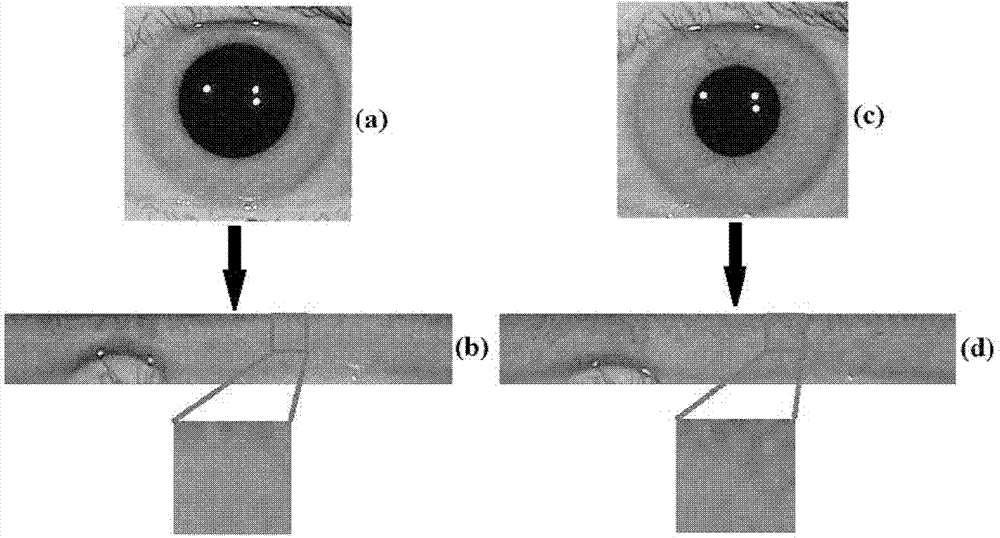DAISY-characteristic-based deformable iris matching method
A technology of local features and texture images, applied in computer parts, instruments, characters and pattern recognition, etc., can solve problems such as easy matching errors, reduce system performance, etc., to achieve high robustness, improve system performance, and high efficiency. Effect
- Summary
- Abstract
- Description
- Claims
- Application Information
AI Technical Summary
Problems solved by technology
Method used
Image
Examples
Embodiment example 1
[0068] Implementation Case 1: The deformable iris matching method based on local features of texture images is suitable for handheld iris recognition devices.
[0069] The invention can be widely applied to hand-held iris recognition systems. Some handheld devices have their own light source. When the user uses the device, the distance between the device and the human eye changes the light that hits the eye. Therefore, the iris of the person will also deform to varying degrees with the light. When the iris is deformed, the false rejection rate will be greatly increased, that is, the user who has already registered will be rejected, which will seriously affect the recognition rate and convenience of the user using the device. Using the existing recognition algorithm, when using the device, the user needs to manually adjust the distance between the device and the eyes within the focal length range, so that the lighting conditions of each recognition are similar, so as to ensure ...
Embodiment example 2
[0070] Implementation case 2: The application of the deformed iris matching method based on the local features of the texture image in the long-distance iris recognition system.
[0071] The invention can be widely applied to long-distance iris recognition systems. In order to make the user more comfortable to use, the iris recognition system has gradually evolved into a form where the machine cooperates with the human. The human does not need to deliberately cooperate with the machine during the recognition, but the machine can adaptively recognize the height of the person and automatically obtain the iris image. However, when the remote device acquires the iris image, it is greatly disturbed by the external ambient light, and it is inconvenient to adjust the light intensity, so the elastic deformation of the iris will also interfere with the system. Existing methods cannot identify people well, and often reject registered people, which greatly reduces user experience. The p...
PUM
 Login to View More
Login to View More Abstract
Description
Claims
Application Information
 Login to View More
Login to View More - R&D
- Intellectual Property
- Life Sciences
- Materials
- Tech Scout
- Unparalleled Data Quality
- Higher Quality Content
- 60% Fewer Hallucinations
Browse by: Latest US Patents, China's latest patents, Technical Efficacy Thesaurus, Application Domain, Technology Topic, Popular Technical Reports.
© 2025 PatSnap. All rights reserved.Legal|Privacy policy|Modern Slavery Act Transparency Statement|Sitemap|About US| Contact US: help@patsnap.com



